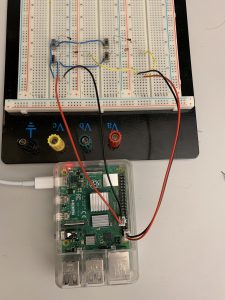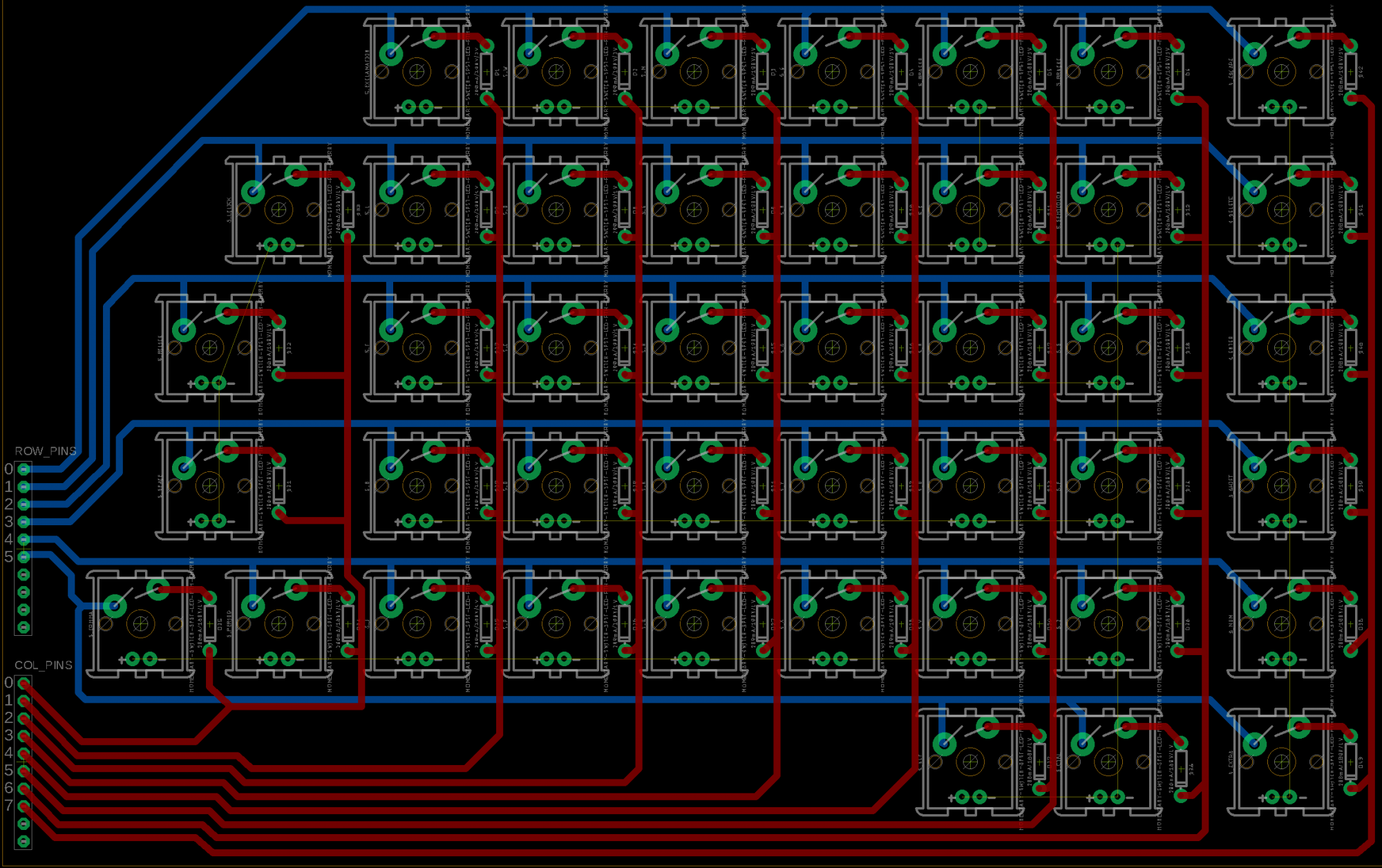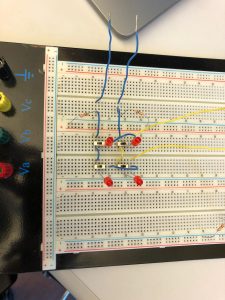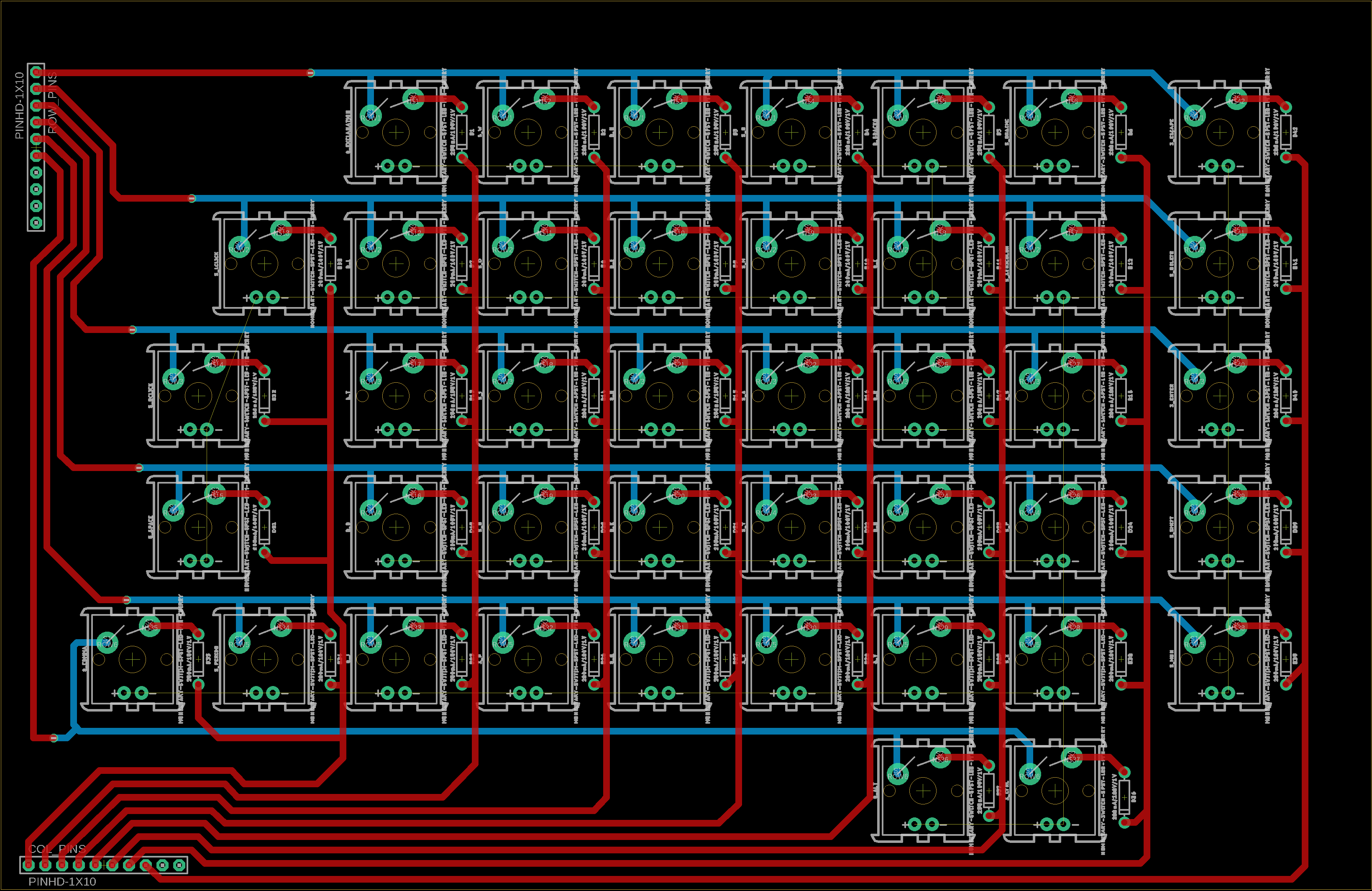This week, the diodes we ordered arrived. I set up the circuit we had originally planned on to make sure that unique keys can be detected. The script I ran can be seen here. I modified the script to be easier to use different keys, and the only change that will need to be made is adding more IO pins to the row and column lists. I also made a class to keep track of what values correspond to what keys when sending the keyboard reports. These values are based on the documentation from the USB usage tables. An image of the circuit I set up is shown below. The blue wires correspond to the rows, and the yellow wires correspond to columns. The circuit diagram can be seen in an older team post here.

When all four switches are closed, all four keys are detected, and every combination of on and off for each switch is recognized as distinct. This means the ghosting issues we were seeing before were caused due to the missing diodes, and that the diodes are not optional for functionality.
On another note, CLASS has not responded to my email yet, so I will need to look into following up and potentially using another source of contact.




